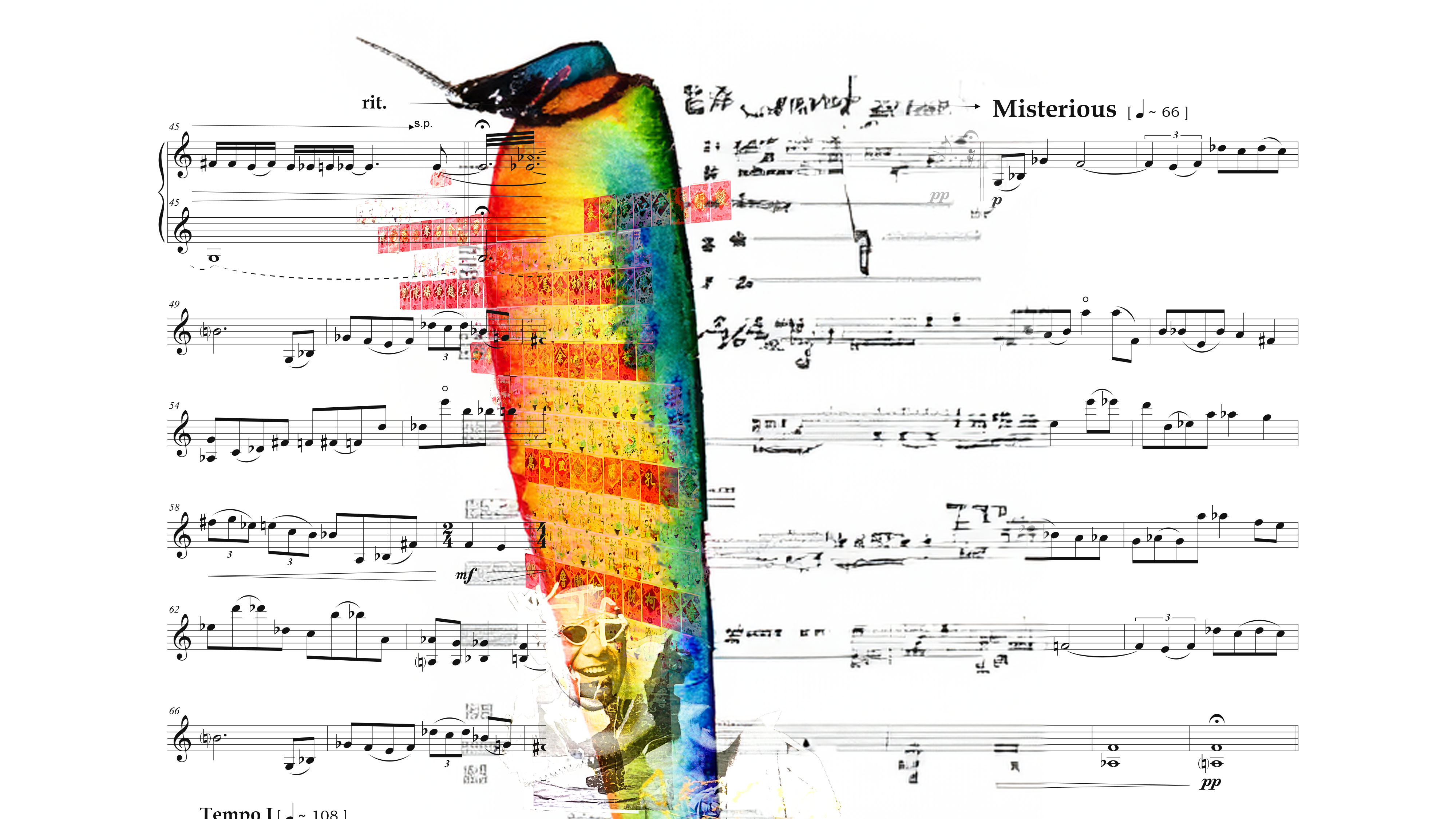for violin and electronics
“The Dialects” is supported by the New Music USA Creator Fund 2023.
Programme Notes
The first movement, “Martial Arts,” draws inspiration from a visit to a martial arts center in San Francisco Chinatown, where a private collection of 1920s-1950s Cantonese opera manuscripts is stored. While working on the materials, I heard Bach’s Chaconne and asked the Kung Fu master, “Do you enjoy classical music?” He nodded and said, “It’s a recording by Midori.”
This is why I always find Chinatown fascinating, especially the way cultures are all mixed together.
The graphic notation is a combination of my violin solo piece for violinist Patrick Yim, AI-generated watercolor skeletons, and artifacts/graffiti from San Francisco Chinatown.
The second movement of “The Dialects,” titled “Sound Walk,” takes you on a journey through Chicago’s Chinatown, an experience recently encountered by Patrick earlier this year. One surprising revelation during our work with the materials was the astonishing diversity of languages spoken in Chicago, surpassing even that of San Francisco, where Cantonese, Mandarin, English, and various other Chinese dialects can be heard.
Furthermore, there is a local venue where people engage in the practice of Cantonese opera within the neighborhood.
The third movement of “The Dialects,” titled “The Opera,” is perhaps the most expressive movement of all. The music is inspired by a fictitious edict presented in a Cantonese Opera during the 1920s to 1950s in San Francisco Chinatown.
The graphic notation also includes some of the initial calligraphy from the manuscripts.
The final movement of “The Dialects,” titled “Contemporary,” is a fast and mechanized piece that vividly captures the rapid pace of life in the two Chinatowns.
The graphic notation draws inspiration from diverse sources such as restaurant menus, graffiti, artwork, and historical buildings in the respective Chinatowns.
